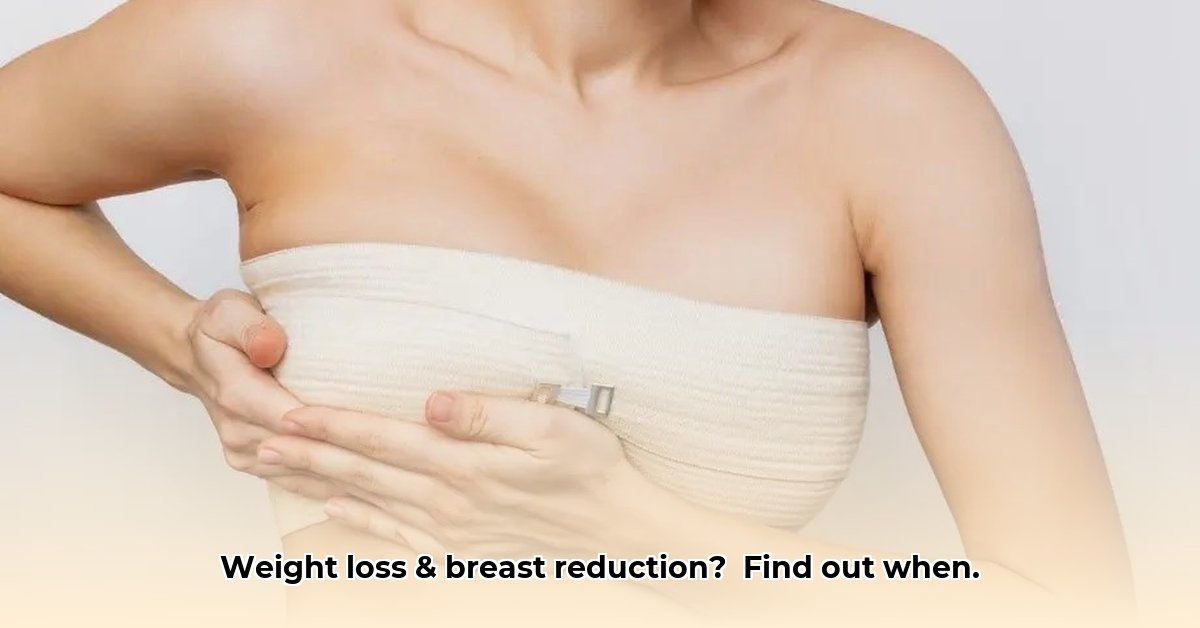
Congratulations on your significant weight loss! This is a remarkable achievement. However, substantial weight loss can sometimes lead to excess skin, particularly around the breasts, impacting self-confidence and comfort. This guide provides a clear, step-by-step approach to understanding your options for breast reduction after weight loss.
Understanding Your Changing Breasts
Weight loss alters your body's shape, affecting all areas, including your breasts. The degree of change depends on factors like your starting breast size, genetics, and the rate of weight loss. Rapid weight loss might result in more sagging than gradual weight loss. Everyone's experience is unique. Have you noticed changes in your breast shape or size after your weight loss?
Timing is Everything: When is the Right Time for Surgery?
The ideal time for breast reduction surgery after weight loss is a crucial decision. Most plastic surgeons recommend waiting at least six to twelve months after reaching your goal weight. This allows for accurate assessment of your final breast size and excess skin. Undergoing surgery too soon might result in further sagging later.
However, for some individuals, the weight of significantly large breasts can hinder exercise and weight maintenance. In these cases, discussing the possibility of surgery before reaching your target weight with a surgeon may be beneficial. This requires careful consideration of the pros and cons in consultation with your doctor.
Your Options: Surgery or Non-Surgical Approaches?
Several approaches can address excess breast skin after weight loss:
Surgical Breast Reduction: This involves removing excess skin and tissue, reshaping the breasts, and repositioning the nipples. It offers the most significant and long-lasting results but involves risks and recovery time.
Breast Lift (Mastopexy): This procedure focuses on lifting and tightening the breasts without extensive tissue removal. It's suitable if you have adequate breast tissue but significant sagging.
Non-Surgical Methods: While creams and lotions claim to improve skin elasticity, their results are often minimal and temporary. Chest exercises can strengthen chest muscles, improving overall appearance, but not addressing excess skin. Is there a non-surgical option that could work for you?
Your Step-by-Step Guide to Making the Decision
Deciding on breast reduction surgery requires careful consideration. Here’s a structured approach:
Consult a Board-Certified Plastic Surgeon: A crucial first step. A qualified surgeon will conduct a thorough examination, discuss your goals, review your medical history, and explain the benefits and risks of each procedure. Complete honesty about your health and expectations is essential.
Understand the Risks and Recovery: Like any surgery, breast reduction carries potential risks, including infection, scarring, and changes in nipple sensation. Your surgeon will detail these possibilities. Allow adequate time for recovery and expect potential discomfort.
Discuss Costs and Insurance: Breast reduction surgery can be expensive. Determine your insurance coverage and out-of-pocket expenses, encompassing consultation, surgery, anesthesia, and post-operative care. How will you manage the financial aspects of this decision?
Set Realistic Expectations: Surgery can significantly improve your breast appearance, but it's not a miracle cure. It's unlikely to completely eliminate all signs of weight loss. Maintain realistic expectations aligned with the procedure's capabilities.
Maintain a Healthy Lifestyle: Essential before and after surgery. A balanced diet and regular exercise are vital for your overall health and maintaining weight loss results. How will you support your overall health throughout this process?
Making the Right Choice: It's Personal
The decision to undergo breast reduction after weight loss is deeply personal. Thoroughly research all options, consider procedure timing, and weigh the pros and cons carefully. Prioritize your health goals, budget, and emotional well-being. Open communication with your surgeon is paramount. The best choice is the one that empowers you to feel confident and comfortable in your own skin. Remember, this journey is yours, and choosing what feels right for you is key.